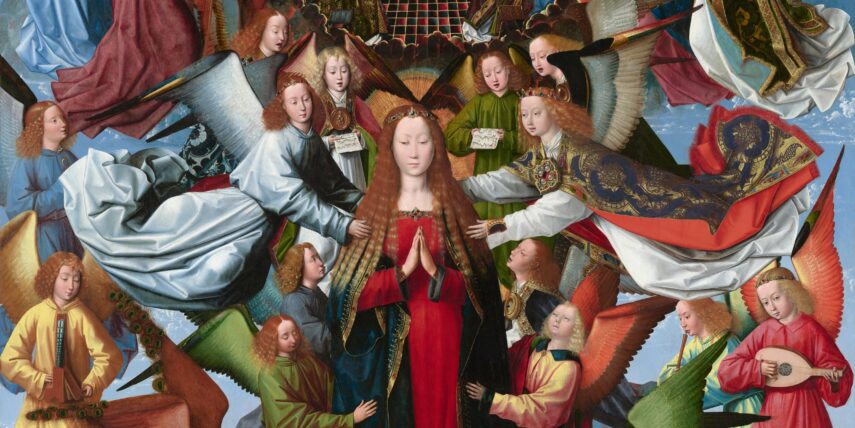
A Ceremony of Carols within a ceremony of carols, Benjamin Britten’s masterpiece for choir and harp in the first half of this program is complemented by Renaissance settings of some of the same texts (by Ockeghem and Sweelinck) in the second half. The result is a kind of infinity mirror that casts new light on the music in both halves of the program. At the core of the second half is a setting of the anonymous poem that’s at the centre of Britten’s work – There is no rose (c.1420), one of the earliest examples of polyphony. An Australian-made mirror must needs include the work of Australian craftsmen – in this case the first performance of a new carol by Alan Holley takes it’s place beside two light-hearted Australian arrangements of well-loved carols.
Read program notes Download program notes
PROGRAM
A CEREMONY OF CAROLS
Benjamin Britten (1913–76)
The harpist is Melina van Leeuwen
TWO HYMNS TO THE VIRGIN
Pierre Villette (1926–98)
Benjamin Britten
INTERVAL
DEO GRATIAS Johannes Ockeghem (c.1410–97) 36-part fugue Arranged E.Anderson
TWO OLD ENGLISH CAROLS
William Ballet (c.1600) Sweet was the song the virgin sang
Anonymous (15th C.) There is no rose
INTERLUDE – SOLO HARP
Alonso Mudarra (c.1510–c.1580) Fantasia No.10
TWO GERMAN SETTINGS OF IN DULCI JUBILO
Samuel Scheidt (1587–1654)
Johann Walther (1496–1570) and Johann Sebastian Bach (1685–1750)
AUSTRALIAN AND UKRAINIAN CAROLS OF BIRDS
Carol of the Two Crows
Text by Mark Tredinnick, music by Alan Holley (born 1954) first performance
Mykola Leontovych (1877–1921) Shchedryk (Ukrainian Bell Carol)
TWO FRENCH NOËLS
Louis Claude Daquin (1694–1772) Noël No.10 (Quand Dieu naquit a Noël)
Traditional, Arranged François-Auguste Gevaert/Elizabeth Anderson, Angels we have heard on high (Les anges dans nos compagnes, sung in English)
HODIE CHRISTUS NATUS EST Jan Pieterszoon Sweelinck (1562–1621)
[gigpress_shows artist=2 tour=36]
